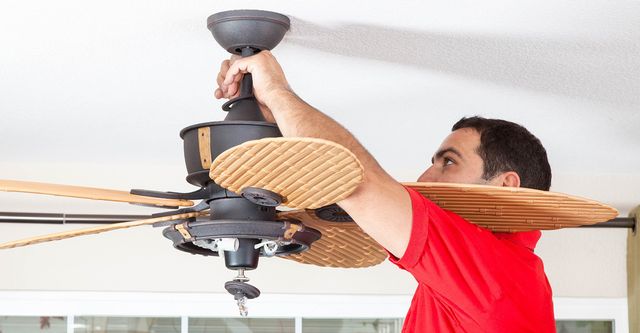Breathe Easy: A Guide to Ceiling Fan Repair
by siteadmin

Ceiling fans are a staple in many homes, providing both comfort and energy efficiency. However, like any household appliance, they’re susceptible to wear and tear over time. From wobbly blades to noisy motors, ceiling fan issues can disrupt your comfort and peace of mind. But fear not! With a bit of know-how and some simple tools, you can tackle common ceiling fan repairs with confidence. Let’s dive into the world of ceiling fan repair and get those blades spinning smoothly again!
Identify the Problem:
The first step in any repair process is identifying the problem. Is your fan wobbling, making strange noises, or failing to turn on altogether? Each issue may have a different root cause, so take some time to observe your fan’s behavior and pinpoint the issue. Check for loose screws, damaged blades, or electrical issues before proceeding.
Tools You’ll Need:
Before diving into repairs, gather some essential tools to make the process smoother:
- Screwdriver (Phillips and flathead)
- Wrench or pliers
- Replacement parts (if needed)
- Voltage tester (for electrical issues)
- Lubricant (for noisy motors) Having these tools on hand will save you time and frustration as you work through the repair process.
Common Repairs:
Now, let’s address some common ceiling fan issues and how to fix them:
- Wobbling Blades: Wobbly blades can be caused by uneven installation or loose screws. Start by tightening all screws and bolts connecting the blades to the fan motor. If the problem persists, use a balancing kit to adjust the weight distribution of the blades.
- Noisy Motor: A noisy motor can be a sign of worn bearings or lack of lubrication. Turn off the power to the fan and carefully inspect the motor housing. If you notice any debris or dust buildup, clean it thoroughly. Apply a few drops of lubricant to the motor bearings to reduce friction and noise.
- Inconsistent Speed: If your fan’s speed fluctuates or fails to reach its maximum setting, there may be an issue with the capacitor or wiring. Consult the fan’s manual or a professional electrician to diagnose and replace faulty components.
- Unresponsive Remote Control: If your fan is controlled by a remote, check the batteries and ensure they are properly inserted. If the remote still doesn’t work, try resetting the fan’s receiver by turning off the power and holding down the reset button for a few seconds.
- Flickering Lights: Flickering lights are often caused by loose bulbs or faulty wiring connections. Turn off the power to the fan and gently tighten any loose bulbs. If the problem persists, inspect the wiring connections in the light fixture and tighten any loose connections.
Ceiling fan repair doesn’t have to be a daunting task. With the right tools and a little troubleshooting, you can tackle common issues and keep your fan running smoothly for years to come. Remember to always prioritize safety by turning off the power before starting any repairs and consulting a professional if you’re unsure about any electrical work. By taking care of your ceiling fan, you can ensure a comfortable and enjoyable environment in your home all year round.
Ceiling fans are a staple in many homes, providing both comfort and energy efficiency. However, like any household appliance, they’re susceptible to wear and tear over time. From wobbly blades to noisy motors, ceiling fan issues can disrupt your comfort and peace of mind. But fear not! With a bit of know-how and some simple…
Recent Posts
- Abilene Electricians: Setting the Standard for Excellence in Electrical Services
- Abilene Electricians: Setting the Standard for Excellence in Electrical Services
- Eco-Friendly Power: How Solar Panels Are Changing the Game in NT
- Eco-Friendly Power: How Solar Panels Are Changing the Game in NT
- Driving the Future: Exploring the Advancements in Electric EV Technology
